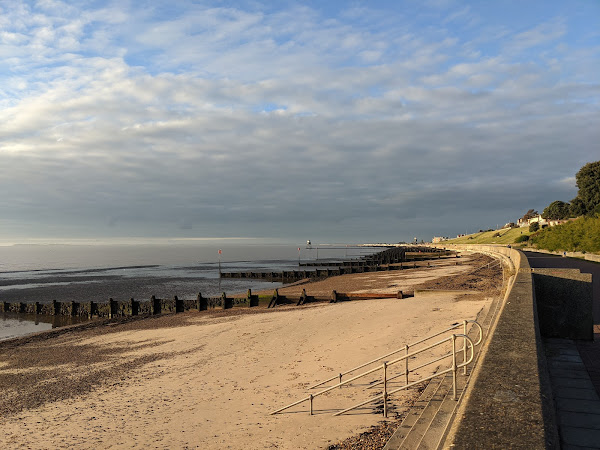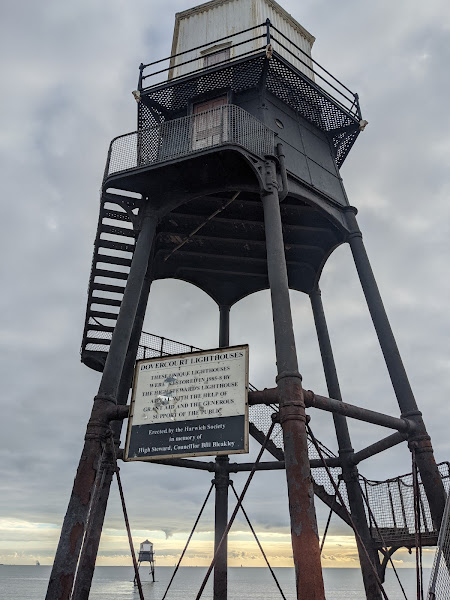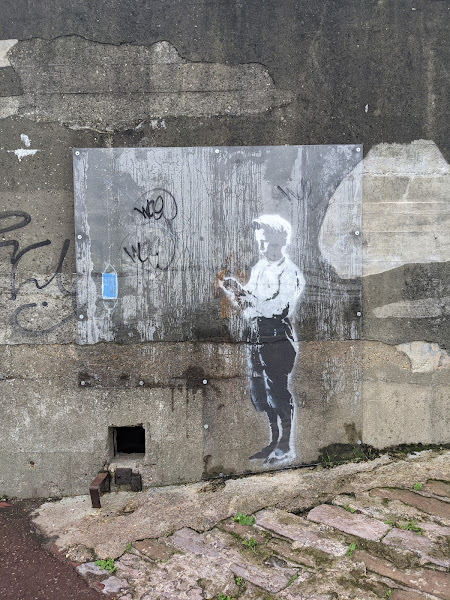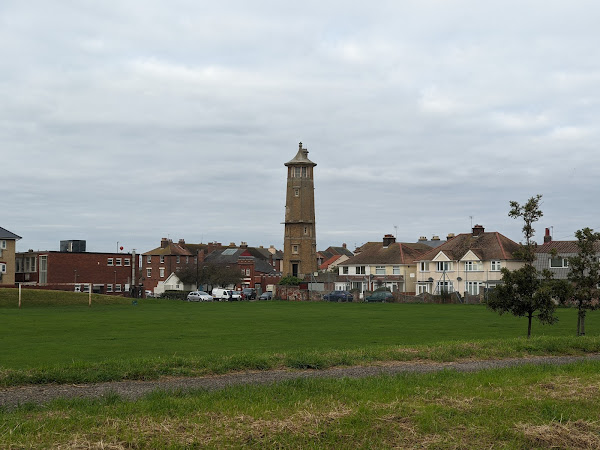After the excitement of last week's parkrun, this week my plan was to get back to my long term goal of ticking off every event in the East of England. There were a couple of possibilities for an "H" event this week, but with temperatures starting to fall, I wanted to make the most of it before it was too late, and so Harwich parkrun felt like a great option.
The area
Harwich is a seaside town, located on a peninsula opposite Felixstowe, where the River Stour and the River Orwell meet the North Sea. The town has played an important strategic role throughout Britain's history, and due to this, the buildings of the town reflect its rich and diverse architectural influences.
The meeting point for parkruns is in Cliff Park, which comprises the grounds of the former Cliff House, along with the adjacent Barrack Field. The mansion was demolished specifically to make space for a public park in the area after the former owners went bankrupt.
The course
The run consists of one small loop of the park, before an out-and-back run along the promenade, with the turning point at the southern tip of the promenade. Instead of a full lap on the return to the park, runners follow the perimeter path of the park back to the bandstand.
As the run is along the promenade, there is virtually no elevation throughout the run - the only small sections being a small rise near the lighthouse, which is covered on each leg of the out-and-back, and the entrance/exit to the park from the promenade.
Public toilets are available in the park next to the cafe, while on-street parking is available near to the event, with a number of paid car parks also available within the town, and a short walk to the start area.
The run
I'm not sure if last week's affairs impacted it, but the event this week felt very low-key, with very little fanfare - perhaps it was the effects of lockdown still lingering? I found myself running virtually the entire course with a couple whose pacing was super consistent, and the consistency made the run seem to pass before I had even got going! I think pacing is definitely something I will work on in the future!
Unlike other promenade-based events, I did notice that Harwich didn't seem to have the same sorts of facilities as more tourism-oriented events like Felixstowe or Chalkwell Beech - something that I will also keep in mind for future events
Thank you to all of the volunteers, as usual, but especially thank you to the lone marshall at the turn-around point!
After the run
When we were all done with parkrun, I took the opportunity to explore the town, and some of the key landmarks.
Hill fort
The remains of the Hill Fort can be explored after parkrun, and opened at 10am.
Banksy artwork
A Banksy artwork has been painted onto the side of the fort, accessible from the path along the breakwater.
High lighthouse
The high lighthouse dominates the skyline of the old town.






